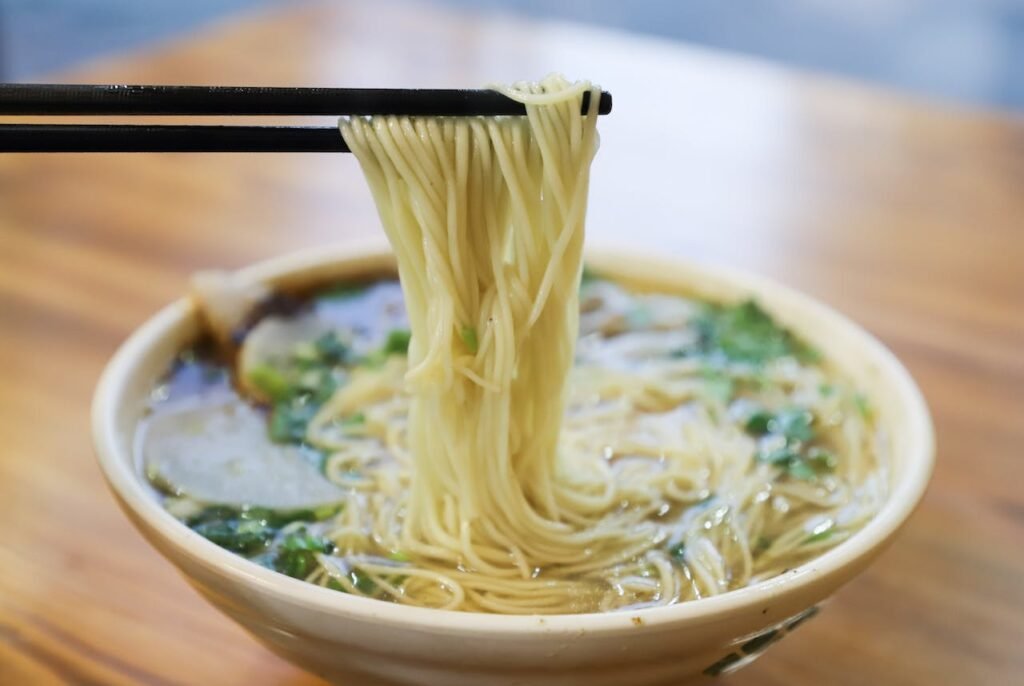Chopsticks are an integral part of Chinese dining culture, and understanding and respecting the proper etiquette surrounding their use is essential when dining in China or with Chinese people. Chopstick etiquette is not only about following rules, but it also reflects a deep respect for the culture and traditions of the Chinese people. By adhering to chopstick etiquette, you show that you value and appreciate their customs, which can lead to a more enjoyable and harmonious dining experience.
Table of Contents
ToggleKey Takeaways
- Proper chopstick handling is important in Chinese dining to show respect and avoid offending others.
- Dos and don’ts of using chopsticks include not pointing them at others and not using them to move plates or bowls.
- Chopsticks symbolize unity and harmony in Chinese culture and should be used to share food with others.
- Sharing food is a significant aspect of Chinese dining and shows generosity and hospitality.
- Chopstick rests are used to keep chopsticks clean and off the table, and should be used properly.
The Importance of Proper Chopstick Handling
Proper chopstick handling is not only important for hygiene and cleanliness but also for showing respect for the food and your dining companions. When using chopsticks, it is crucial to handle them correctly to avoid dropping food or making a mess. This not only ensures that you are practicing good hygiene but also shows respect for the food you are eating. Additionally, using chopsticks properly demonstrates respect for your dining companions by not splattering food or making noise while eating.
12 Essential Words on Chopstick Etiquette Mastery
- 筷子 (kuàizi) – Chopsticks
- 请把筷子放在桌子上。(Qǐng bǎ kuàizi fàng zài zhuōzi shàng.) – Please put the chopsticks on the table.
- 我不太会用筷子吃饭。(Wǒ bù tài huì yòng kuàizi chīfàn.) – I’m not very good at using chopsticks to eat.
- 餐具 (cānjù) – Tableware
- 这套餐具包括筷子和汤勺。(Zhè tào cānjù bāokuò kuàizi hé tāngsháo.) – This set of tableware includes chopsticks and a soup spoon.
- 我们需要更多的餐具,特别是筷子。(Wǒmen xūyào gèng duō de cānjù, tèbié shì kuàizi.) – We need more tableware, especially chopsticks.
- 使用 (shǐyòng) – To use
- 学习如何正确使用筷子很有趣。(Xuéxí rúhé zhèngquè shǐyòng kuàizi hěn yǒuqù.) – Learning how to use chopsticks correctly is interesting.
- 在日本,人们也习惯使用筷子。(Zài Rìběn, rénmen yě xíguàn shǐyòng kuàizi.) – In Japan, people also commonly use chopsticks.
- 禁忌 (jìnjì) – Taboo
- 将筷子直插入饭中是一个禁忌。(Jiāng kuàizi zhí chā rù fàn zhōng shì yīgè jìnjì.) – Sticking chopsticks straight into rice is a taboo.
- 记住不要在餐桌上犯这些筷子禁忌。(Jìzhù bùyào zài cānzhuō shàng fàn zhèxiē kuàizi jìnjì.) – Remember not to commit these chopstick taboos at the dining table.
- 交叉 (jiāochā) – Cross
- 不要让你的筷子在碗里交叉。(Bùyào ràng nǐ de kuàizi zài wǎn lǐ jiāochā.) – Don’t let your chopsticks cross in the bowl.
- 筷子交叉放置可能意味着不吉利。(Kuàizi jiāochā fàngzhì kěnéng yìwèizhe bù jílì.) – Crossing chopsticks might be considered unlucky.
- 传统 (chuántǒng) – Tradition
- 使用筷子是中国饮食文化的一个重要传统。(Shǐyòng kuàizi shì Zhōngguó yǐnshí wénhuà de yīgè zhòngyào chuántǒng.) – Using chopsticks is an important tradition in Chinese culinary culture.
- 每个亚洲国家都有关于筷子使用的独特传统。(Měi gè Yàzhōu guójiā dōu yǒu guānyú kuàizi shǐyòng de dútè chuántǒng.) – Each Asian country has its unique traditions regarding the use of chopsticks.
- 公筷 (gōngkuài) – Serving chopsticks
- 请使用公筷来夹菜,这样更卫生。(Qǐng shǐyòng gōngkuài lái jiā cài, zhèyàng gèng wèishēng.) – Please use the serving chopsticks to pick up the food, it’s more hygienic.
- 在家宴中,准备一双公筷给每道菜是个好习惯。(Zài jiāyàn zhōng, zhǔnbèi yī shuāng gōngkuài gěi měi dào cài shì gè hǎo xíguàn.) – At home dinners, it’s a good habit to prepare a pair of serving chopsticks for each dish.
- 摆放 (bǎifàng) – Placement
- 筷子的正确摆放方式是平行放在桌上。(Kuàizi de zhèngquè bǎifàng fāngshì shì píngxíng fàng zài zhuō shàng.) – The correct placement of chopsticks is to lay them parallel on the table.
- 学习筷子的摆放礼仪可以避免犯错。(Xuéxí kuàizi de bǎifàng lǐyí kěyǐ bìmiǎn fàncuò.) – Learning the etiquette of chopstick placement can prevent mistakes.
- 竹筷 (zhú kuài) – Bamboo chopsticks
- 竹筷是最常见的一种筷子,因为它们既环保又实用。(Zhú kuài shì zuì chángjiàn de yī zhǒng kuàizi, yīnwèi tāmen jì huánbǎo yòu shíyòng.) – Bamboo chopsticks are the most common type, as they are both eco-friendly and practical.
- 许多人偏爱使用竹筷,因为它们的手感好。(Xǔduō rén piān’ài shǐyòng zhú kuài, yīnwèi tāmen de shǒugǎn hǎo.) – Many people prefer to use bamboo chopsticks because they feel good in the hand.
- 一次性筷子 (yīcìxìng kuài) – Disposable chopsticks
- 为了环保,请尽量避免使用一次性筷子。(Wèile huánbǎo, qǐng jǐnliàng bìmiǎn shǐyòng yīcìxìng kuài.) – For environmental protection, please try to avoid using disposable chopsticks.
- 一次性筷子虽然方便,但对环境造成了很大的负担。(Yīcìxìng kuài suīrán fāngbiàn, dàn duì huánjìng zàochéngle hěn dà de fùdān.) – Although disposable chopsticks are convenient, they pose a significant burden on the environment.
- 筷子架 (kuàizi jià) – Chopstick rest
- 在正式的餐桌上,筷子架用来放置筷子,以保持桌面的整洁。(Zài zhèngshì de cānzhuō shàng, kuàizi jià yòng lái fàngzhì kuàizi, yǐ bǎochí zhuōmiàn de zhěngjié.) – At formal dining tables, chopstick rests are used to place chopsticks, keeping the table tidy.
- 使用筷子架不仅卫生,还能展示出餐桌礼仪。(Shǐyòng kuàizi jià bùjǐn wèishēng, hái néng zhǎnshì chū cānzhuō lǐyí.) – Using chopstick rests is not only hygienic but also demonstrates table manners.
- 学习使用筷子 (xuéxí shǐyòng kuàizi) – Learn to use chopsticks
- 学习使用筷子是了解亚洲文化的一个重要步骤。(Xuéxí shǐyòng kuàizi shì liǎojiě Yàzhōu wénhuà de yīgè zhòngyào bùzhòu.) – Learning to use chopsticks is an important step in understanding Asian culture.
- 对很多外国人来说,学习使用筷子可以是一个有趣的挑战。(Duì hěnduō wàiguó rén lái shuō, xuéxí shǐyòng kuàizi kěyǐ shì yīgè yǒuqù de tiǎozhàn.) – For many foreigners, learning to use chopsticks can be an interesting challenge.
The Dos and Don’ts of Using Chopsticks in Chinese Culture
In Chinese culture, there are certain dos and don’ts when it comes to using chopsticks. Firstly, it is important to use chopsticks to pick up food, pass dishes, and show appreciation. When picking up food, make sure to use both chopsticks together rather than using one as a fork. This shows respect for the food and avoids any potential mess or dropping of food. Additionally, when passing dishes to others at the table, use the end of your chopsticks that you have not used to pick up food.
On the other hand, there are certain things you should avoid doing with chopsticks in Chinese culture. Firstly, do not use chopsticks to point at people or objects as it is considered impolite. Similarly, playing with your chopsticks or using them as a drumstick on the table is seen as disrespectful. Lastly, do not cross your chopsticks over other utensils or dishes, as this is associated with funerals and death in Chinese culture.
Understanding the Symbolism of Chopsticks in Chinese Dining
Chopsticks hold significant symbolism in Chinese dining culture. They are seen as a symbol of unity and togetherness, as they are always used in pairs. The use of chopstick pairs represents the idea of two people coming together and sharing a meal. Additionally, the placement of chopstick pairs on the table is also significant. When not in use, chopsticks should be placed parallel to each other on a chopstick rest or on the table. This symbolizes unity and harmony among the diners.
The Significance of Sharing Food in Chinese Dining
In Chinese dining culture, sharing food is an important aspect of the dining experience. Communal dining and sharing dishes create a sense of togetherness and foster a feeling of unity among the diners. When serving food, it is important to offer it to others before serving yourself. This shows respect for your dining companions and demonstrates a selfless attitude. Similarly, when accepting food from others, it is polite to take a small portion rather than taking a large portion all at once.
The Role of Chopstick Rests in Chinese Dining
Chopstick rests are commonly used in Chinese dining culture and serve an important purpose. They are used to hold chopsticks when they are not in use, preventing them from touching the table or other surfaces. Chopstick rests are typically placed on the table next to each diner’s plate or bowl. When using chopstick rests, it is important to handle them properly. Place your chopsticks on the rest parallel to each other, with the tips facing left.
Mastering the Art of Picking Up Food with Chopsticks
Picking up food with chopsticks can be challenging for those who are not accustomed to using them. However, with practice and the right techniques, it can become second nature. When picking up food, it is important to use the correct technique for different types of food. For example, when picking up noodles, use a twisting motion to wrap them around your chopsticks. When picking up rice or small pieces of food, use a scooping motion to gather them onto your chopsticks.
Tips for Properly Holding and Maneuvering Chopsticks
Properly holding and maneuvering chopsticks is essential for a smooth dining experience. To hold chopsticks correctly, place one chopstick between your thumb and index finger, and rest it on your ring finger. Hold the other chopstick between your thumb and middle finger, using your index finger to control its movement. This grip allows for precise control and maneuverability of the chopsticks. When using chopsticks, avoid dropping or flinging food by maintaining a firm but gentle grip.
Navigating Chopstick Etiquette in Formal and Casual Settings
Chopstick etiquette can vary depending on the formality of the dining setting. In formal settings, it is important to be more mindful of your actions and follow stricter rules of etiquette. This includes using chopsticks more delicately and avoiding any unnecessary noise or mess while eating. In casual settings, there may be more flexibility in chopstick etiquette, but it is still important to show respect for the food and your dining companions.
Common Mistakes to Avoid When Using Chopsticks in Chinese Dining
There are several common mistakes that should be avoided when using chopsticks in Chinese dining. Firstly, do not use chopsticks to spear or stab food as this is considered impolite. Instead, use the chopsticks to pick up food in a gentle and controlled manner. Secondly, do not cross your chopsticks over other utensils or dishes on the table as this is associated with death and funerals in Chinese culture. Lastly, make sure to properly clean and handle your chopsticks to maintain good hygiene and show respect for the food.
Understanding and respecting chopstick etiquette in Chinese dining is essential for a harmonious and enjoyable dining experience. By following the proper dos and don’ts of using chopsticks, you show respect for the culture and traditions of the Chinese people. Additionally, mastering the art of picking up food with chopsticks and properly holding and maneuvering them demonstrates your appreciation for the food and your dining companions. By adhering to chopstick etiquette, you can fully immerse yourself in the rich cultural experience of Chinese dining.
If you’re interested in delving deeper into Chinese culture and language, you might also enjoy reading the article on Chinese Porcelain and its cultural significance. Discover the rich history and symbolism behind this iconic art form in China. Click here to explore the world of Chinese porcelain.







